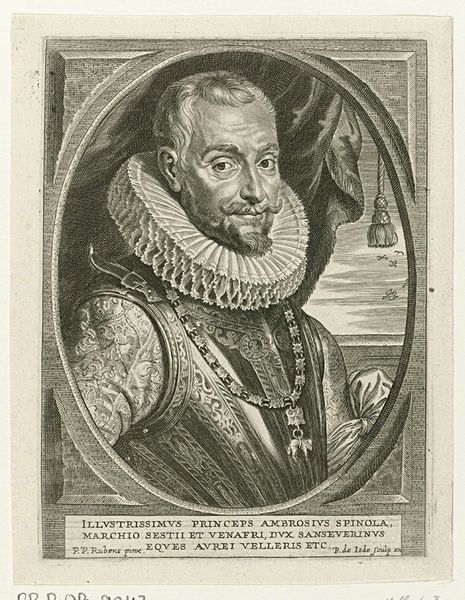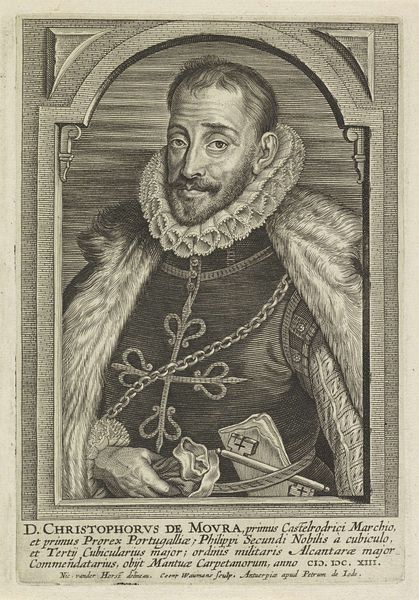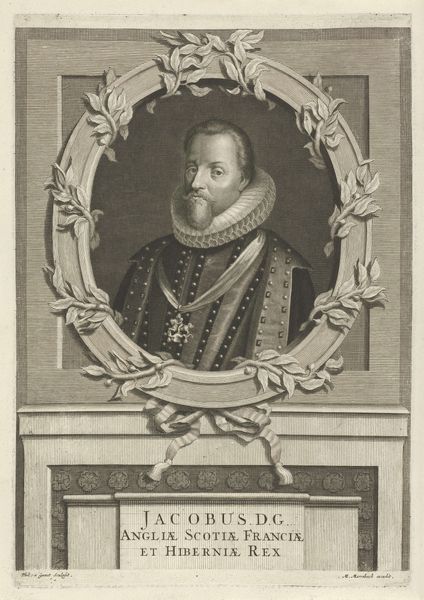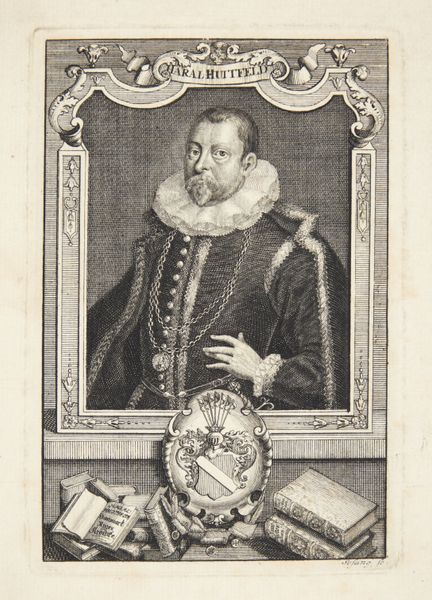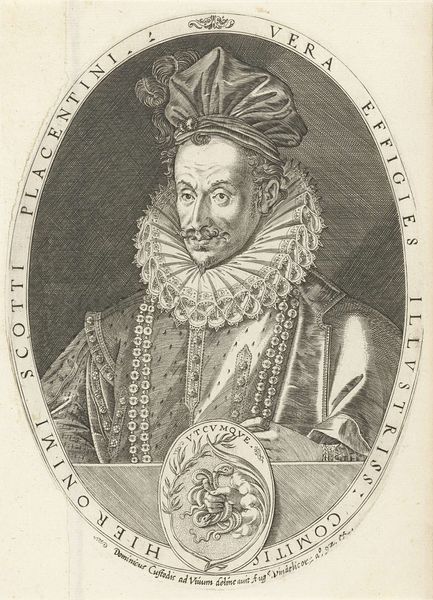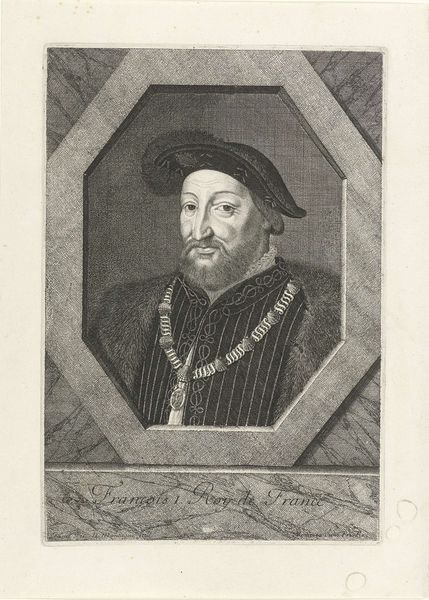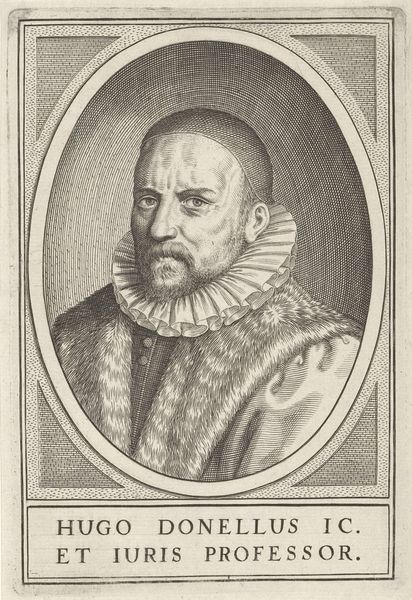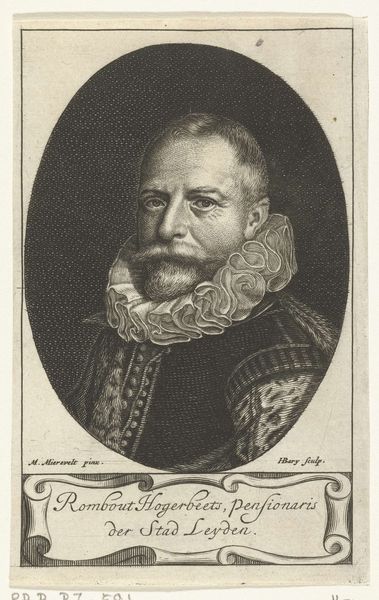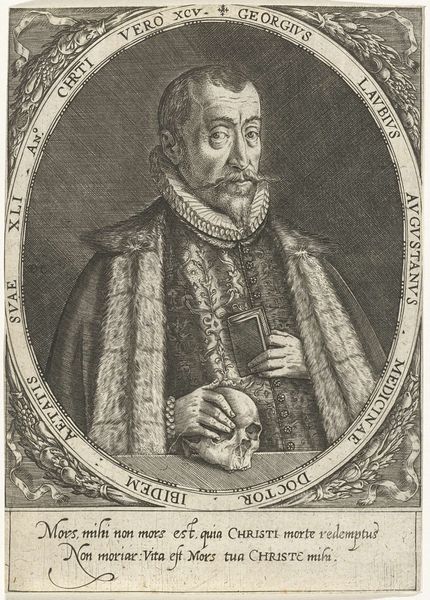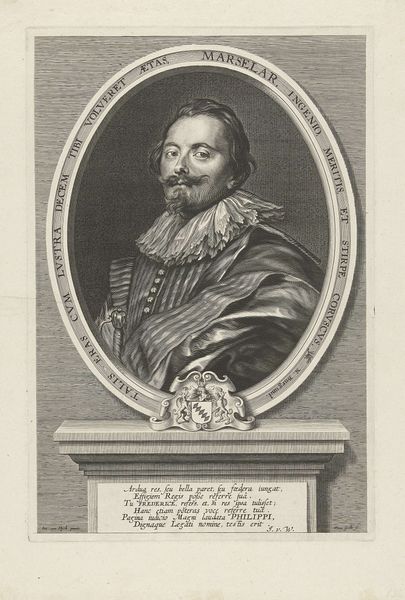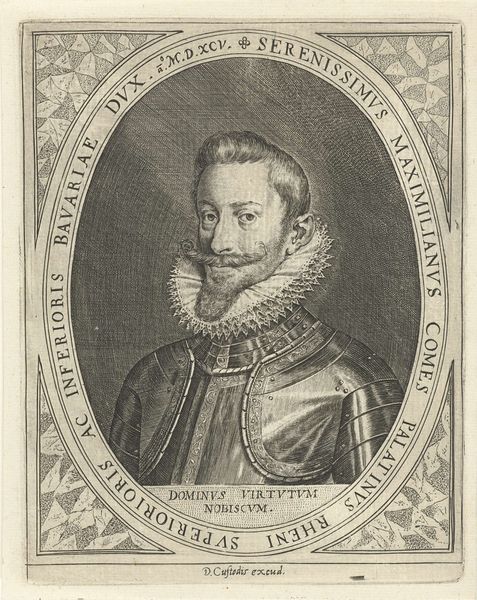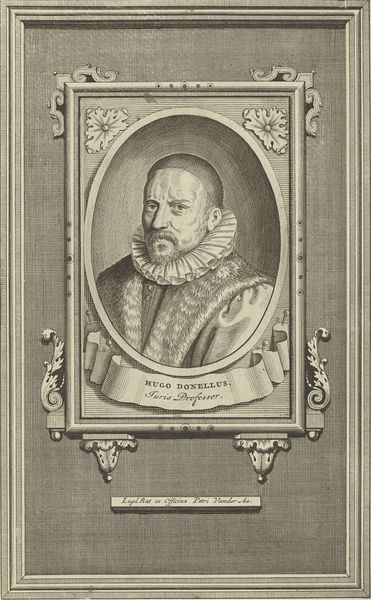
print, metal, etching, engraving
#
portrait
#
baroque
# print
#
metal
#
etching
#
old engraving style
#
engraving
Dimensions: height 257 mm, width 160 mm
Copyright: Rijks Museum: Open Domain
Curator: This is an engraving of Arild Huitfeldt, a piece made around 1652 by Albert Haelwegh. You can see the baroque influence strongly. Editor: My immediate feeling? Authority. Look at that stern face framed by the ornate ruff and the heavy chain. The whole image exudes power and perhaps a touch of self-importance. Curator: Absolutely. This was a portrait made during Huitfeldt's lifetime. Remember, portraiture at this time wasn't just about likeness. It was a carefully constructed statement of status and achievement. Engravings like these served to disseminate that image far and wide, contributing to his public persona. Editor: Notice the text below the image, in Latin. This underscores the status that such a powerful man and the political imagery associated with his importance had on its contemporaries. What would people who were alive at the time of its creation thought of this image, I wonder? Curator: It elevates him as an ideal ruler. Images, such as the chains or garments of this portrait, always convey cultural information. Here, symbols are meticulously deployed. Chains and clothes are not just materials here. They're embodiments of power, legacy, and belonging within a specific societal hierarchy. Editor: And think about how controlled and calculated the composition feels. Huitfeldt is centered within an oval frame. Everything is so contained and formal. The baroque style adds to that sense of controlled grandeur; his garments contrast directly with the delicate ruffle and lace cuffs that he dons. The whole engraving reflects a very structured, hierarchical view of the world. Curator: Precisely. The controlled nature is also a symbolic gesture that suggests more about who Arild Huitfeldt wants you to see. Every element in the image communicates Huitfeldt’s perceived place in society. It is a curated identity, a demonstration of self-aware authority. Editor: And, as such, engravings like these helped shape political perceptions. Not just about one man, but perhaps what good government should ideally resemble for generations to come. Curator: That’s the enduring impact of imagery; even across centuries it provokes a sense of our relationship to the past and powerful figures. Editor: Indeed. Analyzing engravings such as these reveals the narratives, ambitions, and cultural undercurrents that propelled historical and political perceptions.
Comments
No comments
Be the first to comment and join the conversation on the ultimate creative platform.
